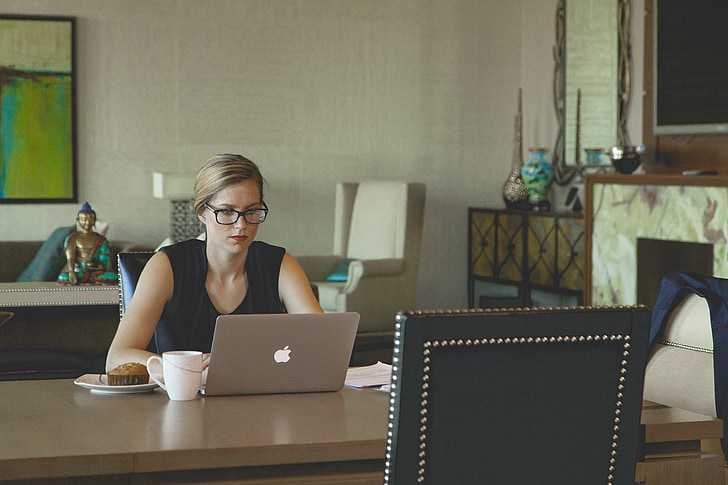MILAN – More people are working from home amid the COVID-19 pandemic. While avoiding the office and staying socially distant is crucial to stopping the spread of the virus, working from home can bring about other health concerns. Here are some risks to take into account – but also examples of how you can find variation at your home office desk. In Sweden, sick leave due to physical and mental ailments has increased sharply throughout the beginning of autumn 2020 (Previa).
A serious development for the work environment that does not seem to stop. New statistics from Swedish corporate health care business Previa, shows that mental illness has never been as high as it is today in Sweden’s workplaces. Similar reports around the world have shown large strains for people working at home, sometimes simultaneously home schooling their children and sometimes with inadequate office equipment or working space.
Many expected that the difficult situation in the workplace and the widespread work from home would be relatively temporary. But it has now turned into a protracted state that entails increased challenges for occupational health.
There is no place like the office
A current research study, carried out in Italy, examined the impact home working had on employees. They observed the perceived job productivity and satisfaction, work-related stress, and musculoskeletal (MSK) issues. In the study, the individuals at-home workstations and its setup, was included as well as how the participants related to physical activity and sitting for long periods.
The participants in the study declared that they were less productive (39.2%) but less stressed (39.2%) and equally satisfied (51%) compared to the time of office working. Regarding the physical impact, the participants felt MSK disorders, such as low back pain (41.2%) and neck pain (23.5%). They even described the neck pain to be worsened in 50%, of the cases. The group suffering from physical conditions also reported a lower job satisfaction. The study stated that the home environment is not always an adequate place to work, with an increased risk for mental health and MSK problems.
Screen time and night time
Not only does working from home present new ergonomic problems, it can give other side effects as well. The pandemic has given us all different local prerequisites and a varied amount of freedom in our everyday life. It is easy to get stuck in front of the screen. Today we use many of our devices for other tasks than work. This has for some people resulted in sleep disorders and, sometimes, even depression.
There is a stated relation between the exposure of blue light from i.e. mobile devices and laptop screens and a disturbance in the circadian rhythm. While light of any kind can suppress the secretion of melatonin, blue light at night does so more powerfully. Harvard researchers and their colleagues conducted an experiment comparing the effects of 6.5 hours of exposure to blue light to exposure to green light of comparable brightness. The blue light suppressed melatonin for about twice as long as the green light and shifted circadian rhythms by twice as much (3 hours vs. 1.5 hours).
Break the circle – not the rhythm
So, what can we do to make the everyday home office be more ergonomic and productive? Well, try to work with the rhythm of your body, not against it.
– We must remember, that we have only been indoor creatures for a very brief period of the human history, says Henrik Clausen, director of the Fagerhult Lighting Academy. Our innate biological history is that of living outdoors, sleeping under the stargazed sky. We depend on the daylight rhythm for our inner balance. So, while you work from home – try to increase the intake of natural light during your workday. Maybe take a morning walk or a walk during your lunchbreak, or perhaps sit outside while drinking your coffee? If possible, place your work desk near a window and let the dynamics of the daylight outdoors help balance your inborn rhythm during the day. Also make sure that you have the right electrical light for your work desk, so you can see your work properly and not strain your eyes.
The key to prevent pain and posture problems, is to have variation and flexibility in your working space. The possibility to break a static circle and instead create a better flow, be it the blood flow to your head or a flow of ideas.
All in all, this new situation has been a vexing and challenging time for all of us and we hope that this unusual everyday life will soon find a more agreeable pace. Remember to be kind to yourself, and find the bright spots in your situation, where ever they might be.
Eight tips for a good workplace at home
Sit properly
If the kitchen table is the only surface available, be sure to sit properly with a backrest. Putting a pillow in the lumbar region as extra support can be a way to help the back. If the usual chair is too low, sit on a pillow. The forearms should be able to rest on the table without the shoulders being pulled up.
Be creative
Look around at home, are there other, less obvious places to work or vary your posture? A shelf or chest of drawers can, for example, work excellently as a standing table. Feel free to work in several different places in the home.
Regard the light
Make sure you have good light. Perhaps you can use a floor lamp that you can move around. Be careful to avoid glare or flicker. Daylight is also a good contribution to your workplace. If possible, plan your stay-at-home-desk so you have the opportunity to look out the window sometimes.
Avoid shoulder pain and ”vulture neck”
Find ways to place the computer at a good height for the eyes. Having the laptop in your knee is not ideal for the neck.
Change position often
Remember not to sit statically for several hours. Do not stay in the same place when it’s time for digital meetings. Get up during group meetings, or sit on the couch for a while. The most important thing is variety and changing body position often.
Rest your eyes
If you spend a lot of time at the computer, make sure to rest your eyes sometimes. Look out the window or change direction, pause your eyes for a few minutes.
Offer distance coffee
Add regular digital coffee breaks with a colleague or workgroup to check in on each other, and see how you all are doing.
Make a dance break
Be sure to get up and move every hour for better blood circulation in joints and muscles. An easy way to fit in some everyday exercise in your workday, is to take a break and sit/rise from your chair 10 times – or maybe take a dance break to your favourite song? If you have a phone call planned, try to do it while going for a short walk.




















